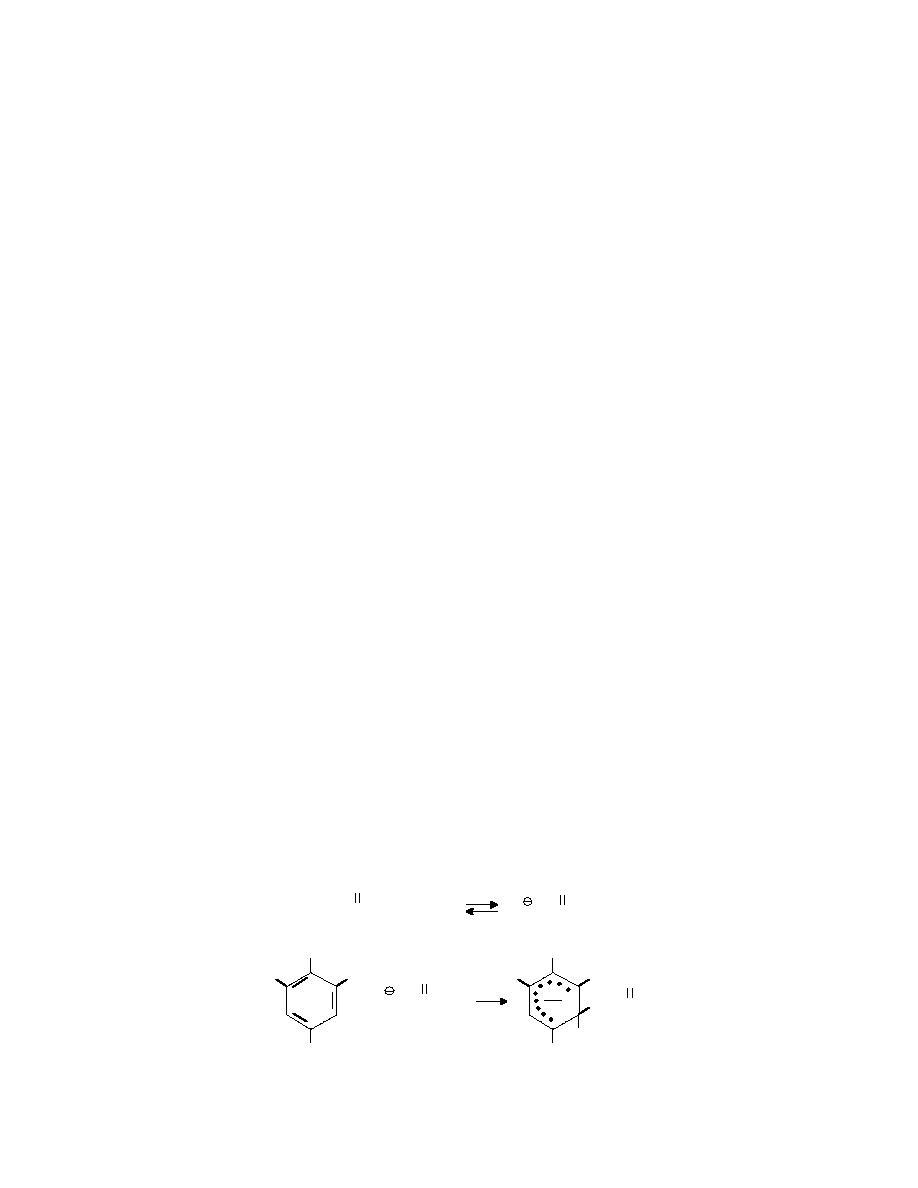
On-Site Analysis of Explosives in Soil
Evaluation of Thin-Layer Chromatography
for Confirmation of Analyte Identity
SAE-IM NAM
cally. Kits containing the associated reagents and
INTRODUCTION
supplies are commercially available from EnSys
Environmental concerns over explosives con-
Corporation (now Strategic Diagnostics, Inc.,
tamination in soil have resulted in the deter-
Newark, Delaware). In the TNT method, acetone
mination of the extent of this contamination at nu-
soil extracts are reacted with strong base as shown
merous Department of Defense installations.
in eq 1 to produce reddish-colored Janowsky an-
Laboratory analytical methods were developed to
ions when TNT is present. Reddish-colored anions
enable the determination of the most commonly
are also produced, however, when 1,3,5-
found components of explosives such as 2,4,6-trini-
trinitrobenzene (TNB) or N-methyl-N-2,4,6-
trotoluene (TNT), hexahydro-1,3,5-trinitro-1,3,5-
tetranitrobenzenamine (tetryl) is present, and a
triazine (RDX), and related impurities and envi-
bluish-colored anion is produced when 2,4-
ronmental transformation products in the soil
dinitrotoluene (2,4-DNT) is present (Jenkins and
matrix (Jenkins et al. 1989, U.S. EPA 1995). On-site
Walsh 1991). Thus a positive response on the TNT
methods for TNT and RDX, the most commonly
test does not unequivocally prove that TNT is
encountered contaminants (Walsh et al. 1993),
present since several other polynitroaromatics can
were also developed to provide a more expedient
give a similar response.
means of rapidly characterizing these sites prior
For the RDX test, soil extracts are first acidified
to extensive laboratory analyses (Jenkins and
with acetic acid and reacted with zinc to reduce
Walsh 1992, Teaney and Hudak 1994). Overall, the
any RDX present to nitrous acid, and the result-
use of on-site methods has been successful in pro-
ing solution is reacted with a Griess reagent to
viding rapid site characterization at explosives-
produce a reddish-colored azo dye (eq 2). Reddish-
contaminated sites.
colored azo dyes are also produced if other
Two of the most commonly used on-site meth-
nitramines (such as octahydro-1,3,5,7-tetranitro-
ods for determining the presence of TNT and RDX
1,3,5,7-tetrazocine [HMX] or tetryl) or organo-
in soil are based on research conducted at the U.S.
nitrate esters (such as nitroglycerin [NG],
Army Cold Regions Research and Engineering
pentaerythritol tetranitrate [PETN], or nitrocellu-
Laboratory (CRREL). These methods are based on
lose [NC]) are present. In addition, nitrate and ni-
the production of colored products when acetone
trite ion, if not removed using an anion exchange
soil extracts are reacted with the appropriate re-
column prior to reaction with zinc, will also re-
agents. In the field screening methods by Jenkins
spond. The ion exchanger is specified in the
(1990) and Walsh and Jenkins (1991), TNT and
CRREL-developed method, but is not recom-
RDX, respectively, are converted to color-specific
mended for routine use by EnSys.
compounds that are quantified spectrophotometri-
For both of these methods, the intensity of the
O
O
+
CH3 -- C -- CH3
B
CH2 -- C -- CH3
CH3
CH3
O2N
NO2
O2N
NO2
O
O
+
CH2 -- C -- CH3
CH2 -- C -- CH3
NO2
NO2
Equation 1.



 Previous Page
Previous Page
